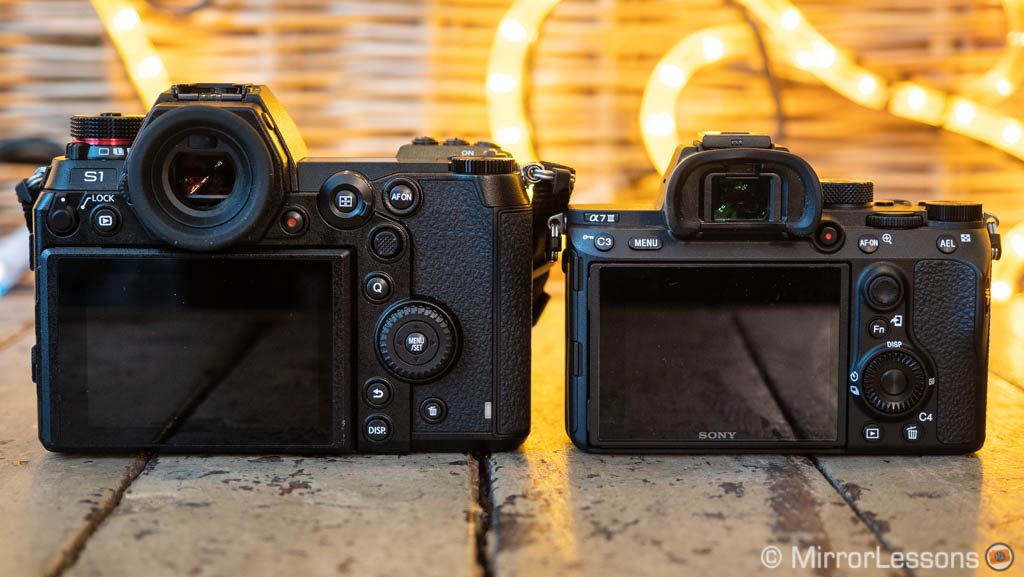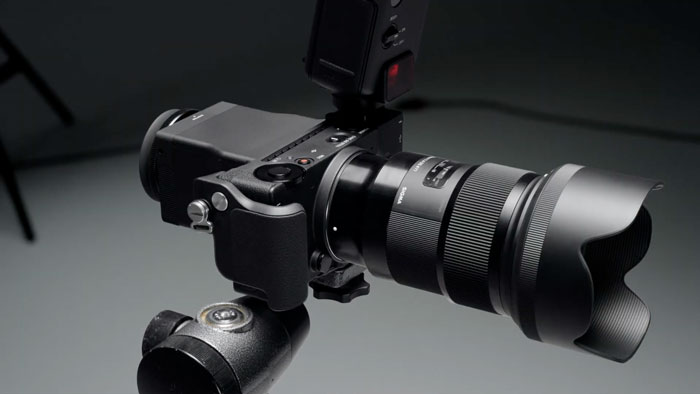

Also, all autofocus cameras can be a challenge to focus manually while looking through an OVF. The OVFs on entry-level cameras (sub $1,000) can be a bit dimmer than the ones found on high-end models. For example, the Nikon D3100’s viewfinder shows 95% of what the sensor captures. Camera manufacturers will list the percentage of the frame a viewfinder covers in a product’s specs. Cons: Optical viewfinders usually show a smaller portion of a frame than what the final image will actually include, and they can feel a bit like looking through a tunnel. The Canon G12 has an optical viewfinder, which sees through the hole above the lens. And anyone who has tried to use an LCD screen in bright sunlight can appreciate that eye-level viewfinders aren’t affected by reflections. OVFs also save battery since looking through them doesn’t require any charge, and the photographer can take time to compose a shot before turning the camera on. Sports shooters rely on this system to see action immediately and anticipate the kind of timing necessary to capture the right moment. Pros: The advantages of the OVF are that the photographer sees a scene with no time lag, no resolution limits, and with all the clarity the lens and the human eye can produce. But because there is no standard for this there can be great variation between different monitors making it hard to understand which one to trust depending on the ambient light levels.The optical viewfinders on point-and-shoot cameras are different in that they don’t show you exactly what the lens sees they look through a separate hole above the lens and show a slightly different view from the final image. Most smaller camera monitors are uncalibrated and place white 3 or 4 times brighter at 300 NIT’s or so to make them more easily viewable outside. Great indoors in a dim room such as an edit or grading suite but unusably dim outside on a sunny day. But I think a lot of people would be very disappointed with a proper calibrated but uncovered display where white would be 100 NITs as it would be too dim for most outside shoots. It’s also been suggested that perhaps the camera and monitor manufacturers should make more small, properly calibrated monitors. My recommendation is to get a loupe for the LCD, then your exposure assessment will be much more consistent as you will then always be viewing the screen under the same near ideal conditions. Pick the wrong one and your exposure may be off.

Or if you also have an extra monitor that is either brighter or darker you may become confused as to which is the right one to base your exposure assessments on. If you are trying to use an unshaded LCD screen on a bright sunny day you may find you end up over exposing as you compensate for the brighter viewing conditions. This allows you to then calibrate the viewfinder with white at the correct 100 NIT level and then when viewed in a dark environment your images will look correct. It’s why a video village on a film set will be in a dark tent. It’s why all high end viewfinders have enclosed eyepieces, not just to help you focus on a small screen but also because that way you are always viewing the screen under the very same always dark viewing conditions. Outside on a Sunny day it will appear to be much darker. Indoors in a dark room the image on it will appear to be quite bright. The issue with uncovered LCD screens and monitors is your perception of brightness changes according to the ambient viewing light levels.


It’s also important to note that this level is the level that is also used for monitors that are designed to be viewed in dimly lit rooms such as edit or grading suites as well as TV’s at home. If you were to calibrate the screen correctly the brightness of white on the screen would be 100 Nits. Or after the shoot and once in the grading suite the pictures look brighter or darker than they did at the time of shooting.Ī little bit of background info: Most of the small LCD screens used on video cameras are SDR Rec-709 devices. It may be that the LCD screen of their camera and the brightness of the image on their monitor don’t ever seem to quite match. This is a common problem and something people often complain about.


 0 kommentar(er)
0 kommentar(er)
